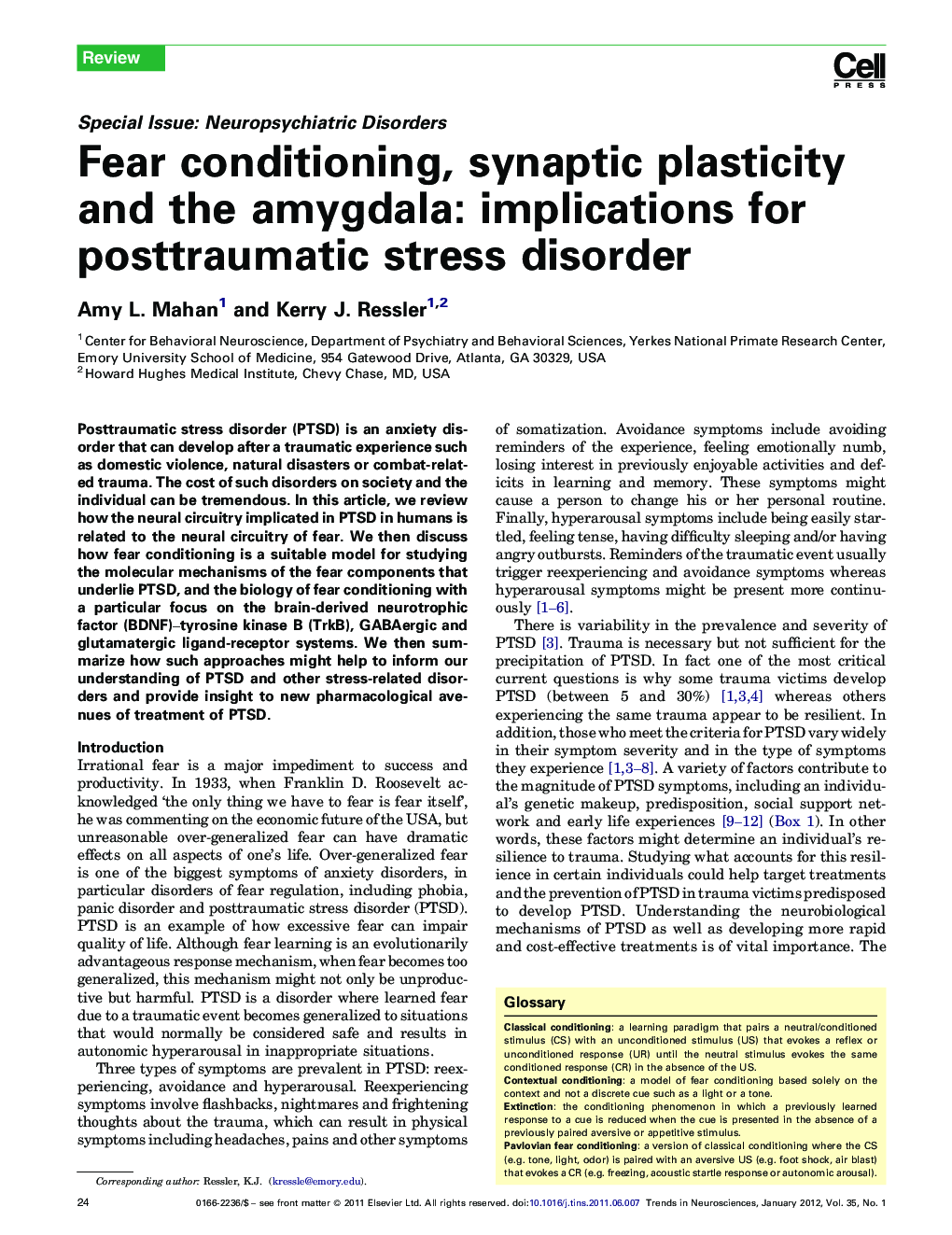| Article ID | Journal | Published Year | Pages | File Type |
|---|---|---|---|---|
| 4354409 | Trends in Neurosciences | 2012 | 12 Pages |
Posttraumatic stress disorder (PTSD) is an anxiety disorder that can develop after a traumatic experience such as domestic violence, natural disasters or combat-related trauma. The cost of such disorders on society and the individual can be tremendous. In this article, we review how the neural circuitry implicated in PTSD in humans is related to the neural circuitry of fear. We then discuss how fear conditioning is a suitable model for studying the molecular mechanisms of the fear components that underlie PTSD, and the biology of fear conditioning with a particular focus on the brain-derived neurotrophic factor (BDNF)–tyrosine kinase B (TrkB), GABAergic and glutamatergic ligand-receptor systems. We then summarize how such approaches might help to inform our understanding of PTSD and other stress-related disorders and provide insight to new pharmacological avenues of treatment of PTSD.
